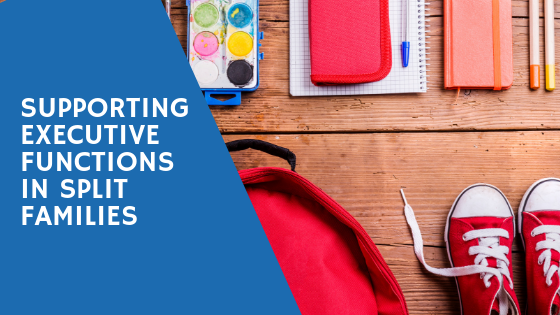Lately I’ve been impressed by some split families who’ve come to my table to rally around their struggling child. It is inspiring to have these parents set aside their differences for the seven hours of the Seeing My Time course. Everyone learns. Everyone is helped because both homes have the same set of information and strategies. It is a win-win situation.
In the February 2012 edition of Attention Magazine, Judith Glasser wrote an article titled: One or More Houses—No Executive Functions. She had some good tips for split families with children who have ADHD or executive functioning deficits:
1. Transitions are difficult, minimize the impact by having things be the same between houses as much as possible.
2. The need for similarity includes bedtimes, diet, screen time and basic behavior management.
3. Keep enough clothes and personal items in each house to minimize the amount of packing that has to be done. For example, one of my 7th graders recently expressed the need for 3 cell phone chargers—one for mom’s house, one for dad’s, and one for grandma’s.
5. Have a second set of schoolbooks for each house to avoid forgotten items. If you can’t get them through the school, you can order them and resell them through Amazon.com. I recommend this strategy for single home families too.
6. Have a “launchpad” in the same location such as the door used to enter or exit the house. The launchpad can be a basket or bin that holds things like cell phones, shoes, backpacks, text books, keys, etc. Include one in each home.
7. Hold a weekly family meeting each week so children get a clear picture of what is happening during the coming week.
I would also like to add a couple more items to this list
8. Each home should have one specific spot, a basket or folder, or notebook, where children place communications from school which the parent needs to see. This is especially important for working parents who arrive home after children.
9. Place family calendars on the walls in both homes. One of the issues I see often is a lack of communication with the children about schedules for moving between houses. Children with executive functioning challenges don’t track these kinds of changes in their heads. Many of my students have expressed anxiety over not knowing exactly where they are going to be and when in a given week.
These family calendars should be in a visible location and updated weekly. They should show the transition dates between homes, important school project due dates, as well as things like sports events and scheduled dentist appointments. If appropriate, it should also show which parent is driving or picking up for school or events.
I realize it is a challenge to sync calendars across houses. It takes extra effort but it will pay off in lowering the child’s stress and other family conflicts. A weekly family meeting in each home would also help a great deal.
Living in two homes often comes with complex emotional issues for children and adults. Dr. Glasser recommends two books for parents to read: The Truth About Divorce— Dealing with the Emotions So You and Your Children Can Thrive, by Robert Emery, PhD. (Viking, 2004). Emery also also has a website that might be helpful, Emery on Divorce. Glasser recommends another excellent book: Proven Parenting Strategies for Helping Children Thrive Through Divorce by Joanne Pedro-Carroll (Avery, 2012).
By using similar support tools and strategies in both homes, parents can dramatically help their children develop their executive functioning skills and lower family frustration and conflict. BOTH homes will benefit!

